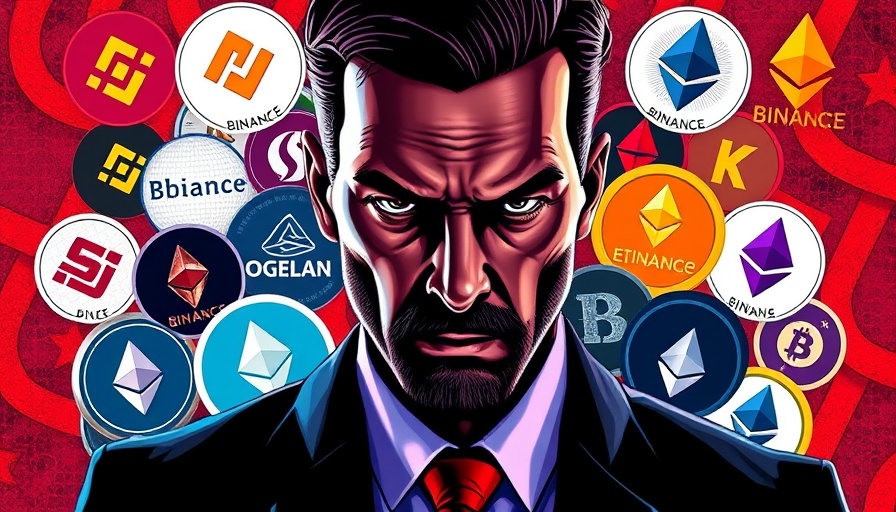
Ethereum Is Facing New Competition in the Blockchain Space
The cryptocurrency landscape, long dominated by Bitcoin and Ethereum, is seen as a paradigm of innovation and decentralization. Interestingly, Ethereum has been a cornerstone for stablecoin integrations like USDC and USDT, effectively establishing itself as the heart of many decentralized financial (DeFi) applications. However, recent announcements from established firms have started to reshape this dynamic, presenting challenges that could redefine the future of major blockchains, particularly Ethereum.
In 'Ethereum's Biggest Threat Is Here: What It Means For ETH!', the discussion dives into the rise of corporate blockchains and their implications, prompting a deeper analysis on how these developments could reshape the cryptocurrency landscape.
Introducing Corporate Blockchains
The advent of dedicated corporate blockchains is steering the crypto conversation into unprecedented territories. Companies like Circle, Tether, Robinhood, and Stripe have unveiled plans for their own blockchain solutions, which promise speed, security, and operational control. Circle's ARK blockchain, for instance, intends to use USDC as its gas fee currency, optimizing transaction costs and processes. Similarly, Tether is developing both Plasma and Stable, chains centered around providing efficient stablecoin transactions that can substantially increase user access in emerging markets. These developments signal a move away from public, decentralized ecosystems, instead favoring controlled, private environments tailored for ease of use.
The Risks for Ethereum
With the rise of these corporate-led blockchains, Ethereum faces a multitude of risks. One major concern is the potential erosion of its status as the primary stablecoin hub if USDC and USDT activities pivot to ARK, Plasma, or Stable. The consequences of this shift could be severe, impacting liquidity, user engagement, and even the foundational structure of Ethereum's DeFi space. The third-party integrations that bolstered Ethereum's utility may also diminish as organizations opt for proprietary solutions that promise lower fees and faster transaction times.
Immediate and Long-Term User Experiences
A dimension that cannot be overlooked is user experience. While crypto enthusiasts appreciate the ethos surrounding decentralization, users outside the niche community often prioritize speed and minimal fees over the underlying philosophy of blockchain. Corporate blockchains, designed with a focus on user-centric features, such as instant confirmations and predictable costs, may lure these users away from Ethereum. A sacrifice of decentralization for greater usability could thus have tangible implications for Ethereum’s market presence.
Regulation and Institutional Impact
As new regulatory frameworks, such as the Genius Act and Europe’s MiCA, usher in an era of compliance, the race among financial heavyweights to establish ownership of their own stablecoins becomes increasingly aggressive. Should players like JP Morgan or Goldman Sachs commence their own blockchain ventures, Ethereum could face even steeper competition, underlining how crucial these developments are for the crypto ecosystem's evolution.
Innovation vs. Tradition
Within this shifting landscape, one must consider how Ethereum, often regarded as a fintech pioneer, will respond. Its strengths remain apparent: substantial institutional trust, expansive DeFi applications, and a robust smart contract framework. However, as bespoke corporate solutions emerge, Ethereum may need to adapt its focus. High-value, trust-driven operations could become its niche while daily transactions shift to these new, specialized platforms. This pivot does not necessarily signify the end for Ethereum but highlights a significant transition towards what may be a multi-chain future.
The Future of Crypto: A Multi-Chain Environment?
As we stride further into the blockchain age, the implications are profound. What remains uncertain is if Ethereum can innovate sufficiently to maintain its relevance in a better-faster-cheaper corporate blockchain world. While Ethereum's importance in the crypto canon remains, the need for transformation grows. The future is likely to see a blend of traditional and modern systems cohabiting, sharing roles where both can thrive.
Your Move: Engage with Crypto Education
To navigate this fast-evolving landscape, potential investors, enthusiasts, and developers must engage with ongoing cryptocurrency education. By keeping abreast of innovative developments, regulatory updates, and market trends, you can better position yourself for success in this dynamic environment. I encourage you to explore more through resources available at Coin Bureau, encompassing deep research and engaging tutorials that demystify the complexities of the cryptocurrency world.
 Add Row
Add Row  Add
Add 




Write A Comment